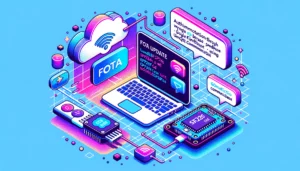An IoT Security Showcase on Advanced Technologies

This showcase provides an in-depth view of how advanced technologies can be integrated to enhance IoT security. By incorporating cutting-edge technologies such as AI, blockchain, biometrics, Zero Trust Models and edge computing, it offers a multifaceted approach to address the complex needs of the rapidly evolving IoT landscape.
Zero Trust Models and Edge Computing
IoT Devices and Edge Computing
- Devices: Factories or smart homes equipped with IoT devices.
- Edge Computing: IoT devices perform computation tasks closer to the data source, reducing latency and bandwidth usage.
- Security Requirements: Enhanced needs for security due to sensitive data processing.
Zero Trust Implementation
- Philosophy: Trust is never assumed, even within the network.
- Biometric Verification: Responsible personnel such as factory managers or homeowners use mobile phones for face scanning.
- Zero Trust Enforcement: Continuous authentication and least privilege access ensure a higher level of security.
Artificial Intelligence Functionality
AI-Driven Local Firewall
- Anomaly Detection: AI analyzes traffic and requests, identifying any unusual patterns or behaviors.
- Zero Trust Security Policies: AI ensures adherence to these policies, adding an extra layer of intelligence to the security measures.
Blockchain in IoT Security
Data Integrity and Access Control
- Data Assurance: Blockchain provides an unchangeable ledger, guaranteeing that information is correct.
- Access Control: Blockchain stores access rights and identity, ensuring that only authorized individuals can make changes.
Transparent Monitoring and Secure Communication
- Transparency: Blockchain offers a clear and unchangeable record of all activities.
- Secure Communication: Information between IoT devices is safeguarded through blockchain encryption methods.
Practical Implementation and Future Prospects
Real-world Applications
- Scenarios: Factories with IoT devices and smart homes acting as IoT hubs.
- Security Measures: Integration of Zero Trust models, edge computing, AI, and blockchain for comprehensive security.
- Challenges and Solutions: Identification of potential issues and how this system can overcome them.
The Future of IoT Security
- Evolution: Continuous improvement and adaptation of these technologies to meet the rapidly changing demands of the IoT domain.
- Opportunities: Exploration of new avenues for implementing these technologies in various other industries and applications.
Summary
This showcase lays out an integrated approach to enhance the protection of IoT ecosystems, utilizing Zero Trust Models, Edge Computing, and Biometric Security.
- IoT and Edge Computing: IoT devices, found in smart homes or factories, are performing tasks closer to where the data is gathered, requiring higher security.
- Zero Trust and Face Recognition: Trust is never given freely, and continuous verification is applied. Face recognition through mobile devices adds a personal level of authentication.
- AI in Security: AI-driven firewalls are put in place to examine traffic and requests, identifying and stopping anything that doesn’t seem right.
- Blockchain in Action: This technology assures that data stays correct and controls who can access or change it. It provides a transparent record that can’t be altered and secures communication between devices.
- Real-world Application and Future Growth: By applying these technologies in factories and smart homes, we see a robust security measure. It’s not just about current use but evolving these tools to meet future needs in IoT.
By keeping a watchful eye on every part of the system and using advanced tools like biometrics, AI, and blockchain, a new standard in cybersecurity is set.










